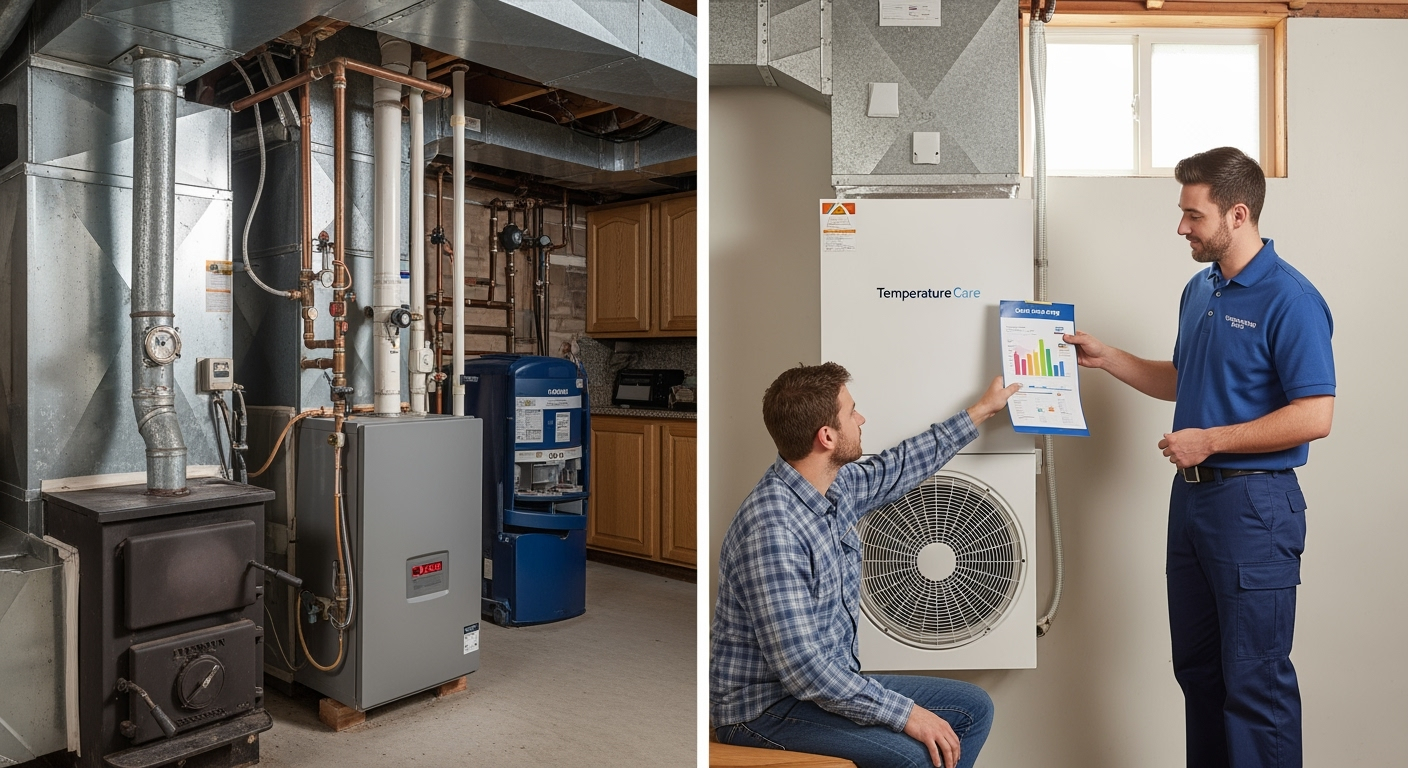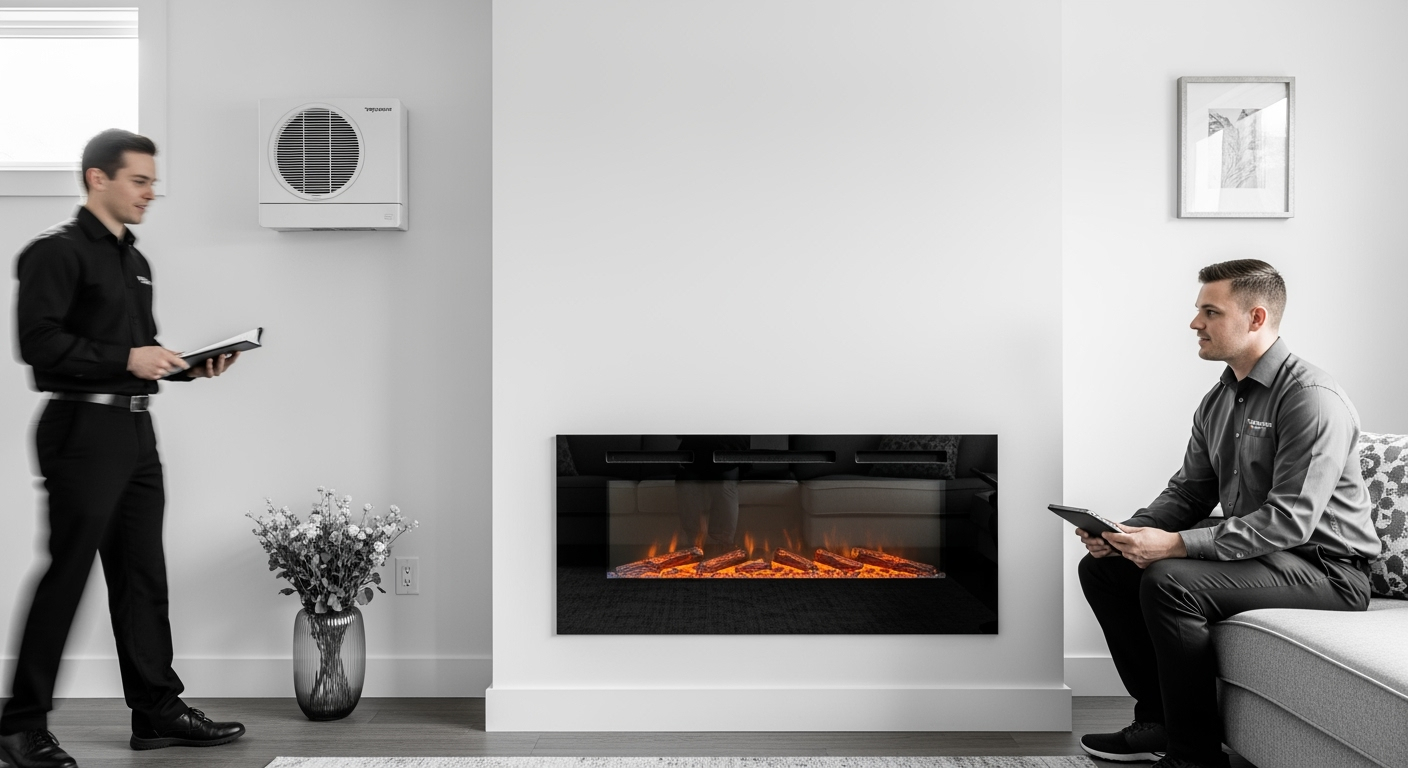If you\’re in the market for a new furnace, you may wonder if a one-stage unit would be enough or whether you should spend a little more for a two-stage one. Homeowners have probably heard the pitch about one-stage vs. two-stage furnaces. Prospective homeowners are often briefed on the central heating system of a residence.
However, every homeowner will need to replace their furnace, and they should know the distinctions between a one-stage and a two-stage model. These two furnaces function differently.
But in general, a two-stage furnace provides several advantages, including lower energy costs, less noise, enhanced interior comfort, improved indoor air quality, and extended equipment lifetime. Read on to discover more about one-stage and two-stage furnaces, their distinctions, and the benefits and drawbacks of each central heating system.
What is one-stage furnace?
A one-stage furnace is the most basic central heating system that can be installed in a modern house. These furnaces only have one power setting: on. This indicates that there is just one established heating setting for a one-stage furnace, which is the highest possible capacity and full power.
It comprises a heat-generating furnace, a system of pipes running throughout the house, and a gas valve that enables gas to enter the furnace and burn, creating heat. A one-stage furnace will always run at total capacity when the thermostat requests heat until the desired temperature is attained.
The way the gas valve works is the critical operational distinction between one-stage and two-stage furnaces. When a one-stage furnace operates, the gas valve opens to total capacity, which means your furnace will burn at maximum efficiency.
This will continue until the interior temperature reaches the level specified by the thermostat. One-stage furnaces are often seen as an old-fashioned central heating method. However, one-stage furnaces continue to be made and developed; thus, the technology is not yet outdated.
The benefits and drawbacks of one-stage furnaces
The one-stage furnace is still very successful in heating smaller, single-story houses, but it is a little old-fashioned approach for heating bigger homes. Since the furnace will continuously operate at full capacity, the regions surrounding the vents will heat up rapidly. Your thermostat \”may assume\” that the entire house has achieved the specified temperature and turn off the furnace before it really has. This causes uneven temperatures around your house.
Many homeowners boost the thermostat\’s target temperature to keep the furnace from turning off too soon, reducing the likelihood of cold patches developing in the house. However, it results in higher energy expenses.
Advantages of one-stage furnace include:
- Affordable
One-stage furnaces are the most affordable central heating system to install in your house.
- Lower maintenance costs
A one-stage furnace repair expenses are similarly affordable as its installation costs, which are often minimal.
Disadvantages of one-stage furnace include:
- Waste of energy
Due to the fact that one-stage furnaces operate at total capacity to maintain the temperature set on the thermostat, they can result in high utility costs.
- Unsuitable for large houses
They are ineffective at heating larger, two-story houses, which contributes to their high usage cost. One-stage furnaces often leave chilly areas around the home because they will turn off once the thermostat temperature is reached.
What is two-stage furnace?
A two-stage furnace employs a furnace as the heat source for its whole system, which consists of a network of pipes flowing throughout the home. In contrast to one-stage furnaces, two-stage furnaces have distinct programming that enables the gas valves to let gas into the furnace at two different levels.
They feature two heating modes, high and low, and will switch between them based on the temperature set by the thermostat. On relatively mild days with less need for heat, the low mode of between 60 and 70% is beneficial. Since the low mode allows a two-stage furnace to save energy during mild weather, it provides comfort and cost-saving benefits.
The benefits and drawbacks of two-stage furnaces
Two-stage furnaces are more efficient than one-stage furnaces because of their two power settings. The low-power option saves energy while also minimizing temperature swings and inconsistent heating in your house.
Advantages of two-stage furnace include:
- Stable indoor temperature
Two-stage furnaces operate at a low power level all of the time, which means less cold air is pumped through the ductwork. Therefore, more than two degrees changes are unusual, and your house will warm up more quickly than with a one-stage furnace.
- Better air quality
Two-stage furnaces operate continuously, which means they continually circulate the air in your house. This causes the air to pass through the filter more frequently, reducing the number of impurities in the air.
- Reduced energy use and operating costs
Two-stage furnaces need less effort to reach the thermostat target temperature, reducing energy consumption. This can result in significant savings on your monthly gas cost.
- Less noise
One of the complaints about one-stage furnaces is that they are overly noisy due to their constant full power operation. Because two-stage furnaces use less power, they produce less noise.
- Enhanced system lifespan
A furnace that always is on and working at total capacity will wear out sooner. A two-stage furnace can operate at a lesser capacity during mild winter days, extending the lifetime of the equipment.
Disadvantages of two-stage furnace include:
- High installation fees
Installing a two-stage furnace is not more expensive than installing a one-stage furnace, but it is still technically more expensive, which might deter potential buyers.
- Higher maintenance costs
Two-stage furnace repairs are often more expensive, so you will spend more to maintain your central heating system.
Conclusion
The primary distinction between one-stage and two-stage furnaces is the gas valve operation in each system. However, two-stage furnaces often do better when evaluating energy efficiency. This indicates that two-stage furnaces might result in longer-term power bill savings for you. If you have a two-story or multi-story house you plan to live in for the coming years, it is better to invest in a two-stage furnace. Also, if your one-stage furnace doesn\’t heat evenly, try a two-stage furnace.
 905-780 3262
905-780 3262

